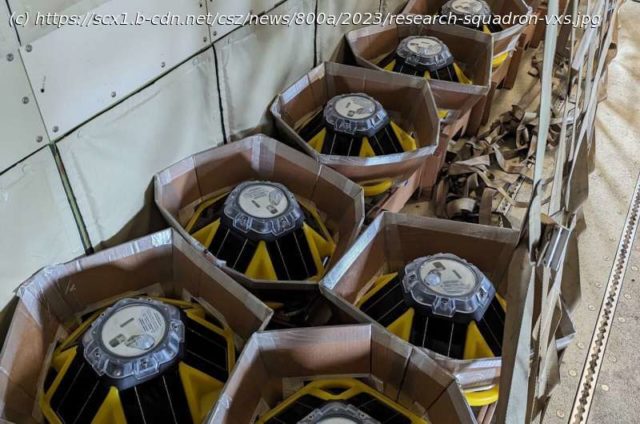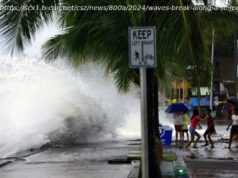U.S. Naval Research Laboratory’s Scientific Development Squadron (VXS) 1 mobilized a crew for a NP-3C Orion operation with less than 24 hours’ notice to airdrop 18 SOFAR Spotter buoys in the Gulf of Mexico ahead of Hurricane Idalia on Monday, August 28. The VXS-1 crew personally deployed the buoys from the aircraft on behalf of researchers working with the National Oceanographic Partnership Program (NOPP) Hurricane Coastal Impacts (NHCI).
U.S. Naval Research Laboratory’s Scientific Development Squadron (VXS) 1 mobilized a crew for a NP-3C Orion operation with less than 24 hours’ notice to airdrop 18 SOFAR Spotter buoys in the Gulf of Mexico ahead of Hurricane Idalia on Monday, August 28. The VXS-1 crew personally deployed the buoys from the aircraft on behalf of researchers working with the National Oceanographic Partnership Program (NOPP) Hurricane Coastal Impacts (NHCI).
VXS-1 airdropped the Spotters hours before Hurricane Idalia made landfall near Keaton Beach, Florida at approximately 7:45 a.m. EDT. The squadron deployed the fleet of Spotters into the path of the hurricane from 1,000 feet aboard the P-3 traveling at 150 mph. The buoys observed Hurricane Idalia’s wave height, sea surface temperature, and barometric pressure in real-time between the afternoons of Monday, August 28 and Wednesday, August 30.






